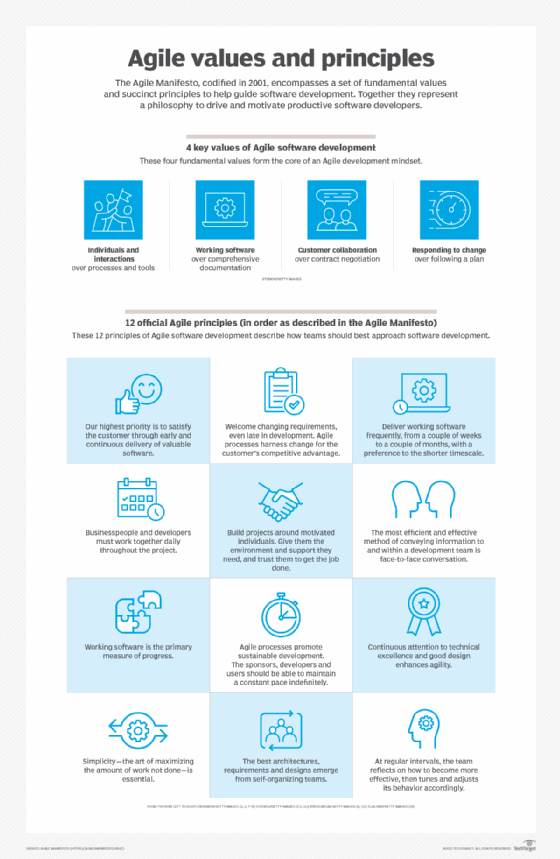Agile infographic: 10 facts about the Agile Manifesto
How well do you know the Manifesto for Agile software development? Here are 10 interesting facts about the Agile Manifesto's principles and values.

They say things constantly change in the software development world.
Nevertheless, the Agile Manifesto, which is now over 20 years old, remains the cornerstone document for the industry's most popular software development frameworks and methodologies, including the following:
- Scrum and Kanban
- Extreme programming
- Feature-driven design
- Pragmatic programming
- Crystal
For those who are new to modern software development, here are 10 interesting facts behind the Manifesto for Agile Software Development.
- The Agile Manifesto is short, fewer than 500 words long. A manifesto is a public declaration, but it does not need to be a lengthy document.
- The Agile Manifesto was signed on February 11th, 2001, which makes it over 20 years old.
- The Manifesto had 17 signatories from a diverse array of fields, including Scrum, XP, Pragmatic programming and Feature-driven development. Among them, Martin Fowler, Robert C. "Uncle Bob" Martin and Kent Beck are three of the most recognizable names today.
- Ken Schwaber and Jeff Sutherland, who wrote the Scrum Guide, were among those who signed the Agile Manifesto. However, the word Agile is nowhere to be found in the latest Scrum Guide.
- Agile was a response to the perceived inflexibility of the traditional Waterfall-based software development practice which dominated the industry at the time. However, many organizations implement some Waterfall-based practices around gathering requirements, analysis and stakeholder sign-off. This has spawned antipatterns that mix Waterfall and Agile. These are often dismissively referred to as Wagile, Agilefall, WaterScrumFall or AgileScrumFall.
- The Agile Manifesto insists that teams frequently deliver software to the client. Every few weeks is best, but do it no later than every few months.
- The Manifesto was signed at the Snowbird ski resort, just east of Salt Lake City in Utah. The site was initially planned as a venue for the 2002 Winter Olympics that occurred months later, but ultimately did not participate.
- Martin Fowler worried about the Agile Manifesto's name -- specifically that most Americans wouldn't know how to properly pronounce the term Agile. (For the record, the second syllable rhymes with file, not bill.)
- Agile is a philosophy, not a framework or a methodology. However, many frameworks and methodologies describe themselves as Agile, meaning they can be used to implement Agile ideas and goals. Some of the most popular Agile methodologies and frameworks today include Kanban, Scrum, XP and Lean. Most were in use long before Agile was created.
- In August 2008, Robert C. Martin proposed a fifth Agile value: craftsmanship over execution, meaning developers should emphasize quality in their code and their behavior. His initial proposal, craftsmanship over crap, was rephrased to reflect that Agile values weigh actual desired qualities.
And those are 10 interesting facts about the Agile Manifesto and its principles and values.


